In Japanese, anime アニメ means "animation," from the katakanization animeeshon アニメーション, as in cartoons that move around. Any animated drawing is an anime. In English, anime refers to Japanese animation, just like manga 漫画 refers to Japanese comics.
Types
There are several types of anime.
TVアニメ
A terebi-anime テレビアニメ, or TV anime, TVアニメ, is an anime that airs on television. Such anime tends to follow a specific format, around 20 minutes long, with a commercial break at middle.
A TV anime may get sold as physics discs (DVDs, Blu-ray) after it airs on TV.
OVA, ONA, OAD
The terms OVA, ONA, and OAD refer to anime series and episodes that weren't originally released on TV, but somewhere else, even if they air on TV afterwards.
An OVA is an anime originally sold in a physical disc. This could be an entire series sold as discs, or a single bonus episode that never aired on TV but was bundled in the blu-ray set of a TV anime.
An ONA is an anime originally streamed on the internet. This is an English term. In Japanese, ONA is called web anime WEBアニメ.
An OAD is an anime originally bundled into a volume of a manga, typically a limited edition volume released after an anime based on that manga airs on TV.
Cel
The term cel animation, seru anime セルアニメ, refers to a traditional method for creating anime, using celluloid sheets for the frames. This is the method used in pre-2000 anime. Modern anime is animated digitally instead.
There are large differences between cel anime and digital anime. They're different media, artistically speaking, and some fans may prefer one over the other. Personally, I prefer cel.
An advantage of cel anime are how lines are drawn: they're drawn with ink, so they feel more alive, natural, even if noisy or uneven. Digital anime prefers tends to have more precise, static lines.
Some digital series attempt to simulate the how the cel lines feel, but it just isn't the same thing.
Cel animation stopped being used because it's too expensive to create. From fixing mistakes to turning the frames into video, the whole process is absurdly costly time and effort-wise compared to doing it digitally.
- Redline レッドライン (2009) is one of the best known examples of cel animation in the modern era.
Digital animation isn't without its own advantages as an art medium. Mixing 3D with 2D animation, compositing backgrounds, and applying all sorts of film and camera effects, are things that are much easier to do digitally than analogically.
- Fate/stay night: Unlimited Blade Works is jokingly called "Unlimited Budget Works" for its digital quality excellence.
3Dアニメ
A 3D anime, in Japanese pronounced surii-dhii anime 3Dアニメ, refers to 3D animation, done in a computer software by modelling characters as 3D models and posing them around.
A few TV anime are entirely done with this process, e.g.:
- Kemono Friends けものフレンズ.
- Ajin 亜人.
- Beastars.
- Houseki no Kuni 宝石の国, Land of the Lustrous.
Right: Juno ジュノ
Anime: Beastars (Episode 12)
- Context: a kabedon 壁ドン in 3D.
CG
The term CG stands for Computer Graphics.(13hw.com) Any graphics done in a computer, digitally, is called CG. In other words, digital art is CG, a digital artist is a CG artist, and a CG anime, CGアニメ, is an anime done digitally, rather than in cel animation.
In particularly, an anime done completely in CG is called "full CG," furu shii-jii フルCG. This can sometimes refer to 3D anime, as 3D images are generated by computer, so they're 3DCG.
CGI
The term CGI stands for Computer Generated Image.(13hw.com) It refers to imagery not drawn by hand, but rendered (simulated) by a computer, which includes all sorts of effects, but, most importantly, 3D images.
In English, it's common to call 3D models (jarringly) inserted into anime CGI. Cars are sometimes CGI, 3D models, rather than hand-drawn.
People don't mind it very much when it's a non-organic object, a machine, but anything organic and 3D is widely despised. In particular, CGI dragons are the worst.
If you're asking yourself "why would an anime have a CGI dragon when the rest of the anime isn't 3D?" Well, that's because a dragon is huge and full of details and takes too long to draw, and the anime production has deadlines and a budget, so it makes more sense to use 3D models.
In series with higher quality, everything is hand-drawn, and the less budget a series has, the more CGI you'll find, until you get to a nightmarish horror like the season 3 of Overlord.
ドットアニメ
A dotto-anime ドットアニメ, literally "dot anime," refers to animated pixel art, i.e. animated dotto-e ドット絵, "dot picture," the sort you would see in a video game ゲーム.
Game: Undertale (Part: before meeting Toriel)
- Context: Flowey does a tehe pero てへぺろ with a star coming out of the wink.
I'm not aware of any TV anime that's entirely done in pixel art.
However, sometimes a TV anime that parodies a video game will have a scene with characters drawn in animated pixel art.
- Mahoujin Guru Guru 魔法陣グルグル (2017) does this several times, as it parodies old JRPGs like Dragon Quest.
- Pop Team Epic, Poputepipikku ポプテピピック, does this multiple times too, once when parodying Guilty Gear.
There are websites that deal only with pixel art, like PixelJoint. Sites like Pixiv, which handle all sorts of artwork, may use dotto-anime ドットアニメ as a tag for pixel art animation.
Stop Motion
Besides the above, pretty much every sort of stop motion animation, ストップモーション・アニメーション, is called anime in Japanese. For reference, some terms:
- kami anime
紙アニメ
Paper anime.
- Not to be confused with the homonym:
- kami anime
神アニメ
God animation. As in god-tier, legendary.
- kiri-e anime
切り絵アニメ
"Cut-picture animation."
Cutout animation.- Stop motion done by moving paper cutouts around as characters.
- kurei anime
クレイアニメ
Clay animation. Claymation.- Done by making models out of clay, e.g. Pingu.
- suna anime
砂アニメ
Sand animation. - ningyou anime
人形アニメ
Doll animation. Puppet animation, パペット・アニメーション.
For reference, an example of stop motion anime:
Video Source: archive.org, accessed 2021-05-24
Original Source: NFC (National Film Center of Japan)
- Context: the lengths a samurai has to go to sheathe his kataka 刀 in a cutout anime.
- ~gatana is rendaku 連濁.
GIFアニメ
A gifu anime GIFアニメ, also read as jifu, is an animation in GIF format. This isn't the same thing as an animated GIF, which would include a scene of a movie with real people. It's always a drawing, an animated cartoon in GIF format
GIF is an image file format, like JPG and PNG. It differs from those in that a GIF can be animated, so it will have multiple frames instead of a single one. In order to make this feasible in older hardware, the GIF format is limited to at most 256 colors, although some use fewer colors for a smaller file size.
People started converting scenes of movies and shows to animated GIFs to post them on the internet. The format was never meant for video. These files became huge and a waste of bandwidth.
At one point, popular image hosting service Imgur launched what it called GIFV, or GIF Video, which wasn't an original format, but simply an existing video format like MP4 that was presented like a GIF, without sound, without controls, and looping like GIF.(imgur.com)
Nowadays, people call this sort of mute, looping internet video a "GIF," regardless of what file format it's in.
A gif anime GIFアニメ is an anime that's in a mute, looping internet video. Like this:
Anime: AKIRA アキラ (Movie)
- Context: the original Akira bike slide.
FLASHアニメ
The term Flash animation, or furasshu anime FLASHアニメ, refers to animation created in the software Adobe Flash, previously Macromedia Flash, distributed in a .SWF file format that was playable inside web browsers supported via plugin, which was popularly used by indie animators.
Nowadays, Flash is no longer supported by browsers. Animation created with Flash is instead distributed as videos. Flash games are distributed as executables (.EXE files) instead of playable inside the browser.
For reference, an example of Flash anime:
Browsers stopped supporting Flash due to security reasons. It was a plugin (or add-on) that allowed browsers to play its a file format with a .SWF extension. This file format included a scripting language called ActionScript.
Both plugins and scripting are security holes.
The browser (e.g. Firefox) provides a set of commands that a plugin like Flash can use. Flash similarly provides a set of commands that a .SWF file can use. Both such sets of commands are called APIs.
A command in an API is created by a programmer with an intended way for use, but it's possible that a bug allows malicious users to exploit the command to do unintended things. If such exploit is found, then a programmer has to patch the security hole so that it can no longer be used.
Naturally, the more commands, the more functionality an API provides, the more potential security holes, and the more work it takes to find and patch them.
Flash is a plugin that can do all sorts of things, including reading and saving files in the computer (file system access), accessing the microphone, webcam, playing videos, downloading files, etc. It's given more functionality by the browser than a normal web page would have, so it's easier to exploit.
If exploited, a hacker can bypass the browser's sandbox and access an user's computer, allowing then to download a virus from anywhere on the internet and saving (installing) it on their computer. Once they can do that, they can do anything.
Flash was popular a decade ago in a era browsers didn't have a lot of functionality. Nowadays, many things that were only possible with Flash can be done with a browser API called Javascript, which doesn't need a plugin.
Javascript can't do everything Flash could, however. While even simple vector animation can be done with Javascript and .SVG, complete cartoons, minutes long, with audio, images, etc., only really make sense as video files.
Video, too, was once not supported natively by browsers, requiring plugins like Flash, but nowadays that's no longer the case.
At some point, Flash became more trouble than it was worth, and support was dropped.
Notably, Newgrounds, a website that hosted tons of Flash content, including some of the greatest Flash animation the internet has to offer, created its own Flash player to allow a more seamless experience.
Non-Japanese Anime
The term for anime that's not Japanese in Japanese is kaigai-anime 海外アニメ, "overseas anime."
Since Japan is an island (well, mostly an island), pretty much everything related to other countries is referred to as kaigai, "overseas."
As mentioned previously, anime just means animated drawings in Japanese, so kaigai-anime isn't specifically cartoons in manga style.
Anime: Gravity Falls (Episode 19)
- Context: an anime character.
- tangan
単眼
One-eyed like a cyclops.
Glossary
For reference, a glossary of anime terms.
Beware that some terms look like they're English words, but are actually Japanese words made up from English words, and which the English anime fandom loaned from the Japanese anime fandom.
See also: wasei-eigo 和製英語.
OP
The OP of an anime refers to the the opening sequence, オープニング, shown at the start of every episode, a.k.a. the intro イント. Not to be confused with the "original poster" of a thread on the internet.
Typically, an anime OP is around one minute and thirty seconds long and features an original song and animation. It's essentially a short animated music video shown before the episode starts.
For reference, the OP of Zombieland Saga Revenge ゾンビランドサガリベンジ:
Some episodes may skip the OP in order to pack more content in the allotted time, or play only the song of the OP while the characters move around.
Since the same OP is played through multiple episodes of an anime, it's sometimes the case that the OP contains spoilers. For example, sometimes a character is only introduced around the end of an anime, but is featured the OP shown since the first episode.
Some fans skip the OP, perhaps to avoid spoilers, perhaps because they don't like the song that much.
Some anime change the OP slightly through episodes, revealing characters as they're introduced, for example. There are also cases where an OP has an alternate version shown only in a particular episode where something unusual happens.
The OP an anime may get replaced by an completely different one after a turning point in the plot, or at regular intervals, like every twelve episodes. Afterwards, this new OP is used every episode instead of the old one.
Generally, the OP of anime fits the anime thematically, but there are cases where this is subverted, e.g. the OP looks like it's a show about Cute GIrls Doing Cute Things, but the actual anime is something completely different, like Asobi Asobase あそびあそばせ.
At the end of the OP, before the anime starts, there may be an announcer mentioning the series's sponsor.
This is often done with a still frame of the anime with the word "sponsor," teikyou 提供, overlaid. Since this frame tends to feature a character, it's become sort of a meme for them to have "sponsor eyes," teikyou-me 提供目, which is when the characters 提供 end up exactly over their eyes.
Title Sequence
The term "title sequence," title back[ground], タイトルバック, refers to a sequence of scenes shown at the start of a movie that contains the credits, and, from there, to similar sequences in an episode of a series.
This term is used more to refer to the sequence in movies, e.g. the title sequence of 007 starting with the spy seen through a gun barrel. In series, the "sequence" is called the "opening," which is an entirely separate clip, so there isn't much point in the term.
However, sometimes an episode skips the opening clip and overlays the credits in a sequence of scenes instead. In this case, it makes sense to call it a title sequence.
Since the audience wouldn't be able to read the text if a lot was happening in the scenes of the title sequence, they tend to calmer scenes, that don't require a lot of attention.
A common pattern is showing:
- A character departing somewhere: biding their farewell, getting their baggage ready.
- Them being in a vehicle going somewhere: in a car or train looking bored staring at the screen.
- The scenery along the way: flower fields, random people working in a town.
- Them reaching wherever they were going: checking in at an inn, hotel, new home, school.
And then the story starts with the character already at the destination. Note that although the opening clip isn't played, the opening song may be used as background music for these scenes.
Also, the same thing can occur at the end of the episode, e.g. the last scenes show the character departing, and the next episode starts with them having arrived at their destination already, but I don't know if the term "title sequence" applies to this case.
Cold Open
The part of the anime before the OP is called the cold open, in Japanese: avant-title アバンタイトル, avant アバン, or avant part アバンパート.(tvtropes.org, toonboom.com)
Sometimes, the cold open tells "the story [so far]," zenkai made no arasuji 前回までのあらすじ, by narrating what happened last episode, or just showing the same scenes the last episode ended in.
Eyecatch
The term eyecatch アイキャッチ refers to the pair of images shown for a moment before and after the commercial break at the middle of an anime episode, which are typically accompanied by a jingle and, if they feature a character, by the character saying a short phrase.
The eyecatch is typically just a still frame, an illustration. It may be the same image used both before and after the commercial break, or two different images. In some cases, the second image is variation of the first.
Top-right: "village chief," sonchou 村長
Middle-left: Kamina カミナ
Middle-right: Gunman, ガンメン
Bottom-left: Yoko Littner, ヨーコ・リットナー
Bottom-right: Viral, ヴィラル
Anime: Tengen Toppa Gurren Lagann, 天元突破グレンラガン (Episodes 1, 2, 3)
- Context: the eyecatch shown before (left) and after (right) the commercial break of episodes 1, 2, and 3 of TTGL.
- The light flare on a soap-bubble-esque light effect is called a Kanada hikari 金田光り, "Kanada light [flare]." See also: Sunrise Stance.
A Part, B Part
In Japanese, A Part Aパート and B Part Bパート refer to the "first half" and the "second half" of an anime episode, that is, the half shown before the commercial break, and the half shown after the commercial break.
There really isn't much of a difference between these two parts, although the A part does have a tendency to end in a mini-cliffhanger.
Exceptionally, Pop Team Epic just repeats A part in the B part, showing basically the same anime twice in a single episode, except with different voice actors, different lines, and with slight variations.
ED
The ED of an anime refers to the ending sequence, エンディング, shown at the end of every episode. Not to be confused with "erectile dysfunction" which is a male health issue.
The ED is very much like the OP: it has its own music, it's the same thing every episode, except it may vary, sometimes it's skipped, it can include spoilers, etc.
Credits
The term credits refers to the text crediting who participated in the production of an episode. Normally, this refers to the ending credit, which shows after the episode, in the ED. There are credits in the OP, too, the opening credits, but the word "credits" alone usually refers to the ED, not the OP.
There are differences between the OP and ED credits.
In the ED credits you can find most information about who made the episode: the names of the animators that worked in a show, the names of the characters that appeared in the show, as well as the actors that provided the voice for these characters, etc.
Some background characters don't really have names, so they may show up as a description, like "village leader," sonchou 村長. Multiple background characters with the same description are enumerated by letters, e.g. "villager A," murabito ei 村人A, "villager B," murabito bii 村人B, and so on.
In the OP credits, you can find information regarding the production: the name of the studio, the name of the work the series is based on, directors, etc.
In some cases, the credits shown at the start of series or movie aren't part of a separate opening clip, but simply text overlaid on random scenes part of the story, typically scenes without dialogue, that don't require a lot of attention from the audience.
Clean
A clean OP and ED is a version of the OP and ED without the credits text, in the sense that they were cleaned off. It's also called creditless version. In Japanese, it's called non-kurejitto ノンクレジット, "non-credit."(dic.nicovideo.jp)
After-Credits Scene
A scene that plays after the ED credits is called an after-credits scene or post-credits scene.
C Part
In Japanese, C part Cパート is the term for the after-credits scene—between OP and commercial break is A part, after break and before ED is B part, and after ED is C part.
Omake
An omake おまけ is something extra, a "bonus." In anime, sometimes the C part is an omake, featuring a joke or a cute scene that wasn't in the manga.
- In Black Clover, ブラッククローバー, there's a corner in the C part called Petit Clover, プチットクローバー, which is an omake.
- In Jujutsu Kaisen 呪術廻戦, there's a corner in the C part called "Juju Stroll," JuJu sanpo じゅじゅさんぽ, which is an omake.
Next Episode Preview
Some series have a "next episode preview," jikai yokoku 次回予告, that plays after credits and after the C part, showing scenes of the next episode together with lines from the next episode, or, in some cases, the characters talking about what will happen to them next episode.
PV
An anime PV is a video created to promote the anime, like a trailer, a teaser. The abbreviation comes from promotion video プロモーションビデオ.
~弾
An anime may release multiple PVs before it airs. They're counted with ~dan ~弾, a counter for consecutive works, e.g.: dai-ichi-dan 第1弾 is the first PV, dai-ni-dan 第2弾 is the second PV, and so on.
The first PV may be nothing more than a video announcing an anime will be made. It may contain no footage of what the anime will look like, just drawings of the characters and text with effects.
It's possible for a subsequent PV to look better than a previous one as scenes are touched up.
For reference, compare the PVs 1 and 2 of One Punch Man available on Youtube:
Some PVs contain a lot of spoilers, including some of the best scenes of an anime. If you like going blind into a series, avoid PVs.
In rare cases, a PV makes the show look like what it isn't, e.g. the PV of Mahou Shoujo Madoka Magica 魔法少女まどかマギカ makes it look like a cute magical girl anime, not hinting at all the unsettling mood of the actual show.
BD
A BD is a blu-ray disc. If an anime airs on TV, it's likely to be sold as BDs (or DVDs) after it airs. For the most part, the content of a BD is identical to the content aired on TV, but there could be some alterations, and extra content included.
- han
版
Edition. Version. - terebi-ban
TV版
TV version.- ~ban is rendaku 連濁.
- dhii-bui-dhii-ban
DVD版
DVD version. - bi-dhii-ban
BD版
Blu-ray version.
As mentioned previously, a bonus episode included in the BD version is called an OVA.
Sometimes, the quality of an anime episode improves in the BD version, specially if it had inferior quality in the TV version due to time constraints or issues in the production.
- Context: QUALITY improved from TV (top) to DVD (bottom).
Some such alterations are particularly infamous.
- Yoake Mae yori Ruriiro na 夜明け前より瑠璃色な featured a certain cabbage that was drawn like a solid green ball in the TV version. It spawned an entire meme of drawing detailed cabbages in anime. In the DVD version, the cabbage was more detailed.
Uncensored Version
Content that was censored on TV, e.g. nudity and gore, may get uncensored in the BD version.
Sometimes, what's censored is a central part of a series, so you can end up in the weird situation where pretty much every episode has entire parts of the screen covered with black, or with stickers, leading some fans to simply give up watching and wait for the uncensored BDs.
There are also cases where a series is censored by distributors outside of Japan, but not censored in Japan, which could mean a BD from that distributor will still be censored.
- Tokyo Revengers 東京リベンジャーズ is an anime about a gang that uses a "swastika," manji 卍, as their symbol. This symbol is common in Japan, where it's associated with Buddhism, but has been censored by distributors outside of Japan.
In rare cases, a scene that aired on TV and generated controversy is removed from the BD version, as production prays everybody forgets about it forever. They'd normally succeed if it weren't for people recording episodes as they air on TV and storing it for posterity.
Not all censorship is removed, e.g. deliberate censorship used for comedic purposes won't be removed.
Anime: Excel♥Saga, エクセル♥サーガ (Episode 6)
- Context: it's impossible to tell who is this character because her identity was censored.
- mozaiku
モザイク
Mosaic. Pixelated censorship technique.
Adaptation
An anime adaptation refers to "turning [something] into an anime," anime-ka アニメ化. Typically, a manga that gets popular enough is adapted into an anime that airs on TV in order to boost its sales.
Not all anime are adapted from manga.
- Shinsekai Yori 新世界より was adapted from a novel.
- Zero no Tsukaima ゼロの使い魔 was adapted from a light novel.
In particular, isekai 異世界 anime, in which a character dies and is reincarnated in "another world," or something like that, tends to be an adaptation of a web novel posted on the website Narou.
- gensaku
原作
Original work, source, in the sense of what work, what manga, LN, etc., an anime is based on.
In rare cases, an anime is adapted into a manga instead.
Anime Original
The term aniori アニオリ, literally "anime original," アニメオリジナル, refers to content in the anime that's not part of the manga or other work it adapts from. This could be a single scene, recurring joke, episode, or even a whole character, or the very ending of the anime.
Usually, anime original scenes are inconsequential and small deviations from the script, or scenes added as a bonus, but there are cases the content is changed radically.
- In Karin かりん, Winner Sinclair ウィナー・シンクレア is a character that only exists in the anime, there are whole episodes dedicated to him, and he becomes crucial part of the plot for some reason. Also, one of the character's backstories is entirely changed in an anime original episode.
In some cases, an anime adapts a manga that's unfinished, still being serialized, and catches up with the last chapters of the manga, running out of canonical content to adapt, so it has no choice but make up original content to animate.
- Fullmetal Alchemist, Hagane no Renkinjutsushi 鋼の錬金術師, has two anime adaptations, a 2003 adaptation with an original ending, and a 2009 adaptation known as Brotherhood with an ending based on the manga.
Filler
A filler is content added to an anime adaptation to make the plot progress slower in order to avoid catching up with a manga that's still being serialized. Fillers range from scenes that pad time, to anime original episodes, to anime original arcs.
Filler episodes and arcs are dreaded by fans because the anime original content can't significantly alter the plot of the manga which the anime will eventually return to, so nothing that happens in the fillers really matters or is actually consequential for the plot. They're completely disconnected scenes.
No important character dies in a filler. No relationships are made in a filler. No new techniques are learned in a filler. Nothing canonical happens in a filler. If you skip all the fillers, you will still have the same story as written in the manga.
Live Action
A live action, or jissha 実写, "live shot," is an adaptation of a series done by real-life actors, e.g. as a real-life movie, rather than as drawings. Some anime have a live action adaptation.
Original Anime
An original anime, オリジナルアニメ, is an anime that's not an adaptation based a manga or another work, but created from scratch.
While an adaptation tends to adapt only the start of a series, specially if its goal is to boost the sales of the manga containing the rest of the series, an original anime tends to feature a complete story instead. Some example of original anime include:
- Code Geass, コードギアス.
- PSYCHO-PASS, サイコパス.
- Mahou Shoujo Madoka ☆ Magica, 魔法少女まどか☆マギカ
- Akudama Drive, アクダマドライブ.
- Kill la Kill, キルラキル.
- 「K」.
- Zombieland Saga, ゾンビランドサガ.
- Futari wa Precure, ふたりはプリキュア.
- Darling in the FranXX, ダーリン・イン・ザ・フランキス.
Shounen, Shoujo, Seinen, Josei
The terms shounen, shoujo, seinen, josei 少年, 少女, 青年, 女性 refer to demographics: "boys," "girls," "adults," and "women." A shounen anime is an anime targeted at boys, that is, typically an anime adapting a manga that was serialized a shounen magazine like Shounen Jump.
Cour
A cour, クール, refers to 13 weeks in a weekly TV broadcasting. One year has four cours. This is a Japanese term loaned from the French word "cours."(デジタル大辞泉)
Given this, you'll only hear someone saying "1 cour" or "2 cours" to refer to one-quarter of a year (3 months) or half-year (6 months) when talking about anime, and people wouldn't use it when talking about western TV shows, for example.
Season
A season of an anime typically refers to a set of 12 or 13 episodes of a series, that is, to 1 cour, if it starts and ends in a single cour. Some series go for longer, e.g. 2 cours, 22–26 episodes, 4 cours, 50–52 episodes, and so on. This is mostly arbitrary, and exceptions exist.
Normally, it's delimited by the production committee, e.g. they decided to adapt a manga into an anime and only have budget for 1 cour, so the season is 12 episodes. Afterwards, maybe there will be an opportunity to adapt a sequel, another cour, which will be the second season.
Popular series with multiple seasons can get very messy in where does a season start and ends, specially if there's a plan to adapt a large arc in multiple cours, with a pause in the middle, like one season of two cours, a break of two cours, and another season of two cours.
In the past, it was more common to have adaptations that were one season with hundreds of episodes spanning years. Nowadays, most anime adaptations is only one or two cours long.
Since a cour is 3 months, and each of the four seasons (winter, spring, summer, fall) is also more or less 3 months long, each distinct cour falls into a different season, and anime tends to be categorized by which cour of the year they fall into.
- fuyu-anime
冬アニメ
Winter anime: starts in month 1, January - haru-anime
春アニメ
Spring anime: starts in month 4, April. - natsu-anime
夏アニメ
Summer anime: starts in month 7, July. - aki-anime
秋アニメ
Autumn anime: starts in month 10, October.
S1, S2, S3
The abbreviations S1, S2, S3, etc., mean season 1, season 2, season 3, etc.
Split-Cour
A split-cour season is an anime season of at least 2 cours that don't air continuously, e.g. the season has 26 episodes, the first 13 air for 3 months (1 cour), the next 3 months the anime doesn't go on air, and the cour after that it returns to TV airing its remaining 13 episodes.
This means there's a break of 1 cour between its 2 cours, i.e. its 2 cours have been split. The result looks like an anime that has two seasons, but it still only counts as one.
In Japanese, a split-cour is called bunkatsu-tsuu-kuuru 分割2クール, "segmented two cours." This is the typical case, but some series have a season of 3 or 4 cours that have been split, not airing continuously.(dic.nicovideo.jp)
Cut
The term cut, カット, refers to a continuous part of a video. Typically, a cut ends and another starts when the camera suddenly shows the scene from a different position, angle or zoom, although there are also cuts in which the camera moves, following an object, or panning to show something too large to fit the frame.(orita-ani.net)
An anime doesn't have an actual "camera," it's someone drawing the moving picture, but a cut in anime still refers to the same idea.
Anime: Hisone to Maso-tan ひそねとまそたん (Episode 11)
- Context: three anime cuts depicting a sliding dogeza 土下座.
- Camera "following" Amakasu running.
- Camera showing Amakasu sliding from afar.
- Camera showing Amakasu from her front.
There are a few differences between cuts in film and anime.
In anime, the background art is static, it's a painting placed behind the animated characters, so the camera can't change angles in a single cut, unless the background art is animated, in which case it will look far more simpler than normal. When a cut ends and another starts, the background art changes completely, too.
With anime adapted from manga, it's common for many cuts to match the panels of manga perfectly. The lines said in an anime also tend be literally what was said in the manga.
It seems that usually a director sketches a storyboard with simple drawings for each cut, and key animators are tasked with drawing the key frames the cuts.
This means that a single cut, drawn by a single key animator, should have around the same level of quality and style all through, but different cuts, drawn by different key animators, may be noticeably different.
Some fans are even able to tell apart who was the key animator tasked with drawing a given cut from their style alone.
There is no set number of seconds or frames per cut. It's all very arbitrary. A half-second zoomed shot of a character's hand touching something is a cut. A quarter-second shot of them blinking is a cut. A ten second still shot of them talking is a cut. It's not a very good unit to measure anything.
That said, high quality animation tends to have more movement in a single cut, which means a single cut ends up being much longer.
Series without budget will avoid having a lot of movement per cut, restricting themselves to static images with just the mouth movement, or just a few body parts moving, or using techniques to give the illusion of movement when there is none, like by showing an static drawing and shaking the camera, or just panning and zooming in-out by scaling the image up-down a lot.
Action and fighting series, scenes, can be very costly to animate compared to adaptations of comedy yonkoma 4コマ where all characters do is talk to each other. A low budget approach to action scenes is strategically structuring cuts to avoid drawing too much movement. Where a high budget would draw a character punching another and them flying to the wall in a single cut, for example, a low budget series could start with the punch, but before it landed, switch to the attacked character's face in pain, and then switch to them flying, all in order to reduce the complexity of the animation.
BGM
The term BGM is abbreviation of BackGround Music, バックグラウンドミュージック. In native Japanese: haikei ongaku 背景音楽.
Fanservice
The term fanservice refers to anything added for fans, but typically suggestive scenes, poses, clothing, tropes, and so on added as a bonus in a series. Common examples include: shower scenes, bath scenes, beach episodes, hot springs episodes, clothing randomly getting torn apart, among others.
Stitch
A stitch is a large unofficial image created by putting together frames of a panning shot from an anime.
Often, a large illustration is drawn for an anime that will be shown zoomed in, to a level it won't fit the screen, so the "camera" will pan, from bottom to top, for example, to show the whole illustration.
A stitch is taking frames of this panning shot and editing them together to form the large illustration, so you can see the whole thing at once, instead of a panning shot.
Source: japanesewithanime.com (CC BY-SA 4.0)
For reference, an example of a stitched image:
Anime: Denpa Onna to Seishun Otoko 電波女と青春男 (Episode 1, Stitch)
- Context: a girl wrapped into a blanket like a burrito sits on a zabuton 座布団 in seiza 正座 position.
Sequel Names
For reference, some common patterns in titles of anime sequel:
Number
The counter ~ki ~期 is used to count anime seasons in Japanese.
- ikki
1期
Season one. - ni-ki
2期
Season two.
If you see ni-ki in the title of an anime, that means it's the season two of that anime.
- Ansatsu Kyoushitsu Dai-ni-ki
暗殺教室 第2期
Assassination Classroom Second Season.
Some anime just use the ni 二, "two." For example:
- Baka to Test to Shoukanjuu Ni'!
バカとテストと召喚獣 にっ!
Baka and Test and Summoned-Beasts Two.
Some anime use tsuu ツー, the katakanization of the English number "two."
- Toaru Majutsu no Indekkusu Tsuu
とある魔術の禁書目録II
Toaru Majutsu no Index Two. - Kiratto Puri-chan Shiizon Tsuu
キラッとプリ☆チャン シーズン2
Kiratto Pri-chan Season Two.
~hen ~編
The suffix ~hen ~編, or ~篇, means "edition," as in a "compilation" of content. It's used in titles of anime seasons that adapt an arc as a whole. For example:
- Owari no Serafu: Nagoya Kessen-hen
終わりのセラフ 名古屋決戦編
Seraph of the End: Nagoya's Decisive Battle Arc. - Kami nomi zo Shiru Sekai: Megami-hen
神のみぞ知るセカイ 女神篇
The World Only God Knows: Goddess Arc.
A kanketsu-hen 完結編 is specifically the "concluding part" of a series, i.e. the "final arc."
- Inuyasha: Kanketsu-hen
犬夜叉 完結編
Inuyasha: Final arc. - Saiki Kusuo no Sainan: Kanketsu-hen
斉木楠雄のΨ難 完結編
Saiku Kusuo's Disaster: Final Arc.
zoku 続
The word zoku 続 means "continuation," tudzuki 続き, sometimes seen as zoku-hen 続編, "continuation arc," i.e. "the sequel."
- Zoku Natsume Yuujinchou
続 夏目友人帳
Continuation: Natsume's Book of Friends. - Koodo Giasu Hangyaku no Ruruushu Zoku-hen
コードギアス 反逆のルルーシュ 続編
Code Geass: LeLouch of the Revolution - The Sequel.
Extra Exclamation Marks
Some anime sequels have an extra exclamation mark or some other unusual punctuation instead of a word that makes sense like "season 2" or "sequel."
For reference, some examples:(rrr-lang.hatenablog.com)
| Season 1 | Year |
|---|---|
| Himawari'! ひまわりっ! |
2006-04. |
| Himawari'!! ひまわりっ!! |
2007-01. |
| Shugo Kyara! しゅごキャラ! |
2007-10. |
| Shugo Kyara!! Doki' しゅごキャラ!!どきっ |
2008-10. |
| Shugo Kyara!!! Dokki Doki しゅごキャラ!!!どっきどき |
2009-10. |
| Hayate no Gotoku! ハヤテのごとく! |
2007-04. |
| Hayate no Gotoku!! ハヤテのごとく!! |
2009-04. |
| K-on! けいおん! |
2009-04. |
| K-on!! けいおん!! |
2010-04. |
| Working!! | 2010-04. |
| Working'!! | 2011-10. |
| Working!!! | 2015-07. |
| Shinryaku! Ika Musume 侵略!イカ娘 |
2010-10. |
| Shinryaku!? Ika Musume 侵略!?イカ娘 |
2011-09. |
| Yuru Yuri ゆるゆり |
2011-07. |
| Yuru Yuri♪♪ ゆるゆり♪♪ |
2012-07. |
| Yuri Yuri, ゆるゆり、 |
2019-09. |
| PUCHIM@S! ぷちます! |
2013-01. |
| PUCHIM@S!! ぷちます!! |
2014-04. |
| Gochuumon wa Usagi desu ka? ご注文はうさぎですか? |
2014-04. |
| Gochuumon wa Usagi desu ka?? ご注文はうさぎですか?? |
2015-10. |
| New Game! | 2016-07. |
| New Game!! | 2017-07. |
| Bokutachi wa Benkyou ga Dekinai ぼくたちは勉強ができない |
2019-04. |
| Bokutachi wa Benkyou ga Dekinai! ぼくたちは勉強ができない! |
2019-10. |
Gekijouban
A gekijouban 劇場版 is a "theatrical version," i.e. an anime movie, shown on movie theaters, rather than on TV.
It's sometimes the case that the start of a series is adapted as a TV anime and a later arc is adapted as a movie instead. For reference, some examples:
- Gekijouban: Kimetsu no Yaiba: Mugen Ressha-hen
劇場版 鬼滅の刃 無限列車編
Theatrical Version: Demon Slayer: Infinite Train Arc. - Gekijouban: Vaioretto Evaagaaden
劇場版 ヴァイオレット・エヴァーガーデン
Theatrical Version: Violet Evergarden. - Gekijouban: Soodoaato Onrain -Oodhinaru Sukeeru-
劇場版 ソードアート・オンライン -オーディナル・スケール-
Theatrical Version: Sword Art Online -Ordinal Scale-.
Seiyuu
The word seiyuu 声優 means "voice actor," and a voice actor is someone who does the voice of an anime character.
Sakuga
In Japanese, sakuga 作画, meaning literally "working picture," refers to the work done to animate drawings in an anime. In English, sakuga is typically used to refer to an anime that looks well-animated, moving smoothly or beautifully.
- genga
原画
"Origin picture."
Key animation, which serves as the base, i.e. "origin," upon which the anime is animated. - douga
動画
"Moving picture."
In-between animation, the process of drawing frames between the key frames of key animation.
The combination of the two steps above is called sakuga 作画 in Japanese.(vantan-game.com)
Anime: Joshiraku じょしらく (Episode 1)
- Context: that's a lot of sakuga.
- nurunuru ugoku
ヌルヌル動く
To move smoothly.
Observe that the example above is a single cut.
A complete anime has steps besides sakuga, since anime isn't just animating characters, e.g.:
- saishiki
彩色
Coloring, as in adding colors to the sakuga, which, although drawn with colored lines, doesn't have colored fills. - haikei
背景
Background, as what's drawn behind the characters, that doesn't move. - satsuei
撮影
Filming, putting the colored frames, background, etc., together into a video.
Anison
An anison アニソン, standing for anime song, アニメソング, refers to the songs played in the OP and ED of an anime, as well as other songs that may show up in key points in a series, or just anime-esque songs in general.(dic.nicovideo.jp)
Key Visual
In Japanese, a key visual キービジュアル is a main image of used to market something in a public website, pamphlet, etc. For anime, a key visual generally features an image of the its characters.(oca.ac.jp)
For the record, this term has nothing to do with key animation. Presumably, it's called "key visual" because it's "key" as in "main" and "visual" as in "image."
Just like releasing a PV, releasing a key visual means you're releasing information about a project.
Image source: kiminona.com, accessed 2021-05-15.
- Context: the key visual used to market Your Name.
- From this, you can already tell what the main characters look like.
Subs
The subs are subtitles, the text containing the English translation of the Japanese dialogue in an anime.
Fansub
A fansub is an unofficial translation of an anime, with English subtitles. A fan who subtitles anime is a fansubber. Given how this can be a lot of work, translating, typesetting, quality-checking, etc., fansubbing is typically done by several people working as a fansub group.
Softsub
A softsub is a subtitle that can be toggled on and off. There are two types: external files (e.g. in the .srt extension) that can be loaded into a video player, and subtitle tracks embedded into the video file.
For the later, typically the Matroska (.mkv) video container format is used, as it allows a video file to contain multiple audio and subtitle tracks.
Hardsub
A hardsub is a subtitle that can't be toggled off. The text is edited into the video frames and the whole video has to be re-encoded, which is the video variant of adding a text to a .jpg image and saving it as .jpg again.
Hardsubs are used mainly because of the lack of support for softsubs.
Since a softsub is loaded separately, it can fail to load, or maybe the video player doesn't support rendering subtitles, which means there won't be any subs. A hardsub always shows up, because it's burned into the video.
Dubs
The dubs are the episodes with English audio, the dubbed version of an anime.
Fandub
A fandub is an unofficial dub of an anime.
Raw
A raw is an untranslated version of an anime, in Japanese, without subtitles. You need to be able to understand Japanese in order to watch anime raw.
Episode Counters
The counter for stories, ~wa ~話, is used to count anime episodes:
- dai-ichi-wa
第一話
First story. First episode. - dai-ni-wa
第二話
Second story. Second episode.
The counter for times, ~kai ~回, is sometimes used to refer to an episode broadcast.
- zenkai
前回
Previous time. Previous episode. - jikai
次回
Next time. Next episode.
The counter for volumes, ~kan ~巻, is used to refer to blu-ray volumes.
- dai-ikkan
第1巻
First volume. - dai-ni-kan
第2巻
Second volume. - zenkan
全巻
All volumes. Complete set.
References
- What is GIFV? - imgur.com, accessed 2021-05-15.
- クール - デジタル大辞泉 via dictionary.goo.ne.jp, accessed 2021-05-15.
- 分割2クール - dic.nicovideo.jp, accessed 2021-05-15.
- メモ:続編で「!」が増えるタイプのアニメタイトル - rrr-lang.hatenablog.com, accessed 2021-05-15.
- キービジュアル - oca.ac.jp, accessed 2021-05-15.
- 作画/原画 - vantan-game.com, accessed 2021-05-15.
- The Teaser - tvtropes.org, accessed 2021-05-15.
- 「アバン」とは、アニメの最初に流れるアレ!結構奥深いんです! - toonboom.com, accessed 2021-05-15.
- CG[ComputerGraphics]・CGI[ComputerGeneratedImage] - 13hw.com, accessed 2021-05-24.
- ノンクレジット - dic.nicovideo.jp, accessed 2021-05-24.
- dic.nicovideo.jp - アニメソング, accessed 2021-05-24.
- 【アニメ】カット、シーン、シークエンスの違いの整理【映画】 - orita-ani.net, accessed 2021-06-19.
![Parts of an anime episode: at start, "the story [so far] (up until the last episode," zenkai made no arasuji 前回までのあらすじ; then the cold open, in Japanese avant-title アバントタイトル; the intro or OP; which ends in the "sponsor," teikyou 提供; after the OP, the A Part Aパート; a commercial break, CM; before and after the commercial break, the "eyecatch," アイキャッチ; then the B Part Bパート; the ED with the credits; an after-credits scene, called a C Part Cパート in Japanese; and the "next episode preview," jikai yokoku 次回予告.](https://media.japanesewithanime.com/uploads/parts-of-an-anime-episode.png)
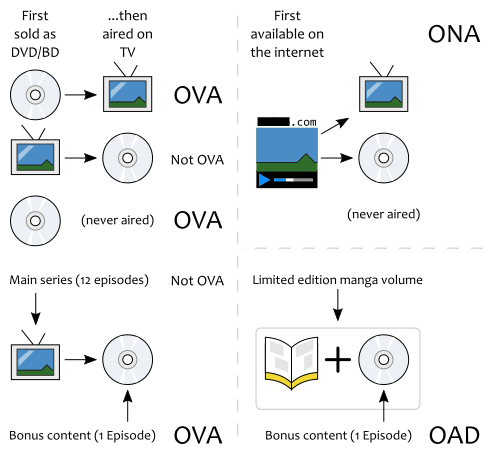
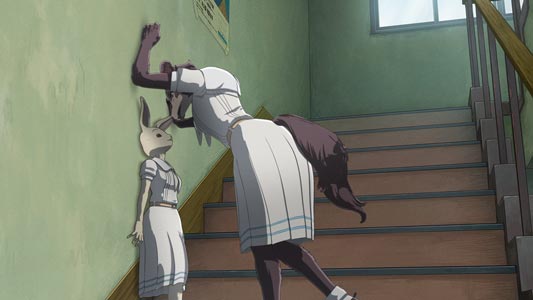
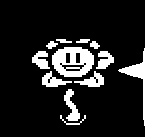

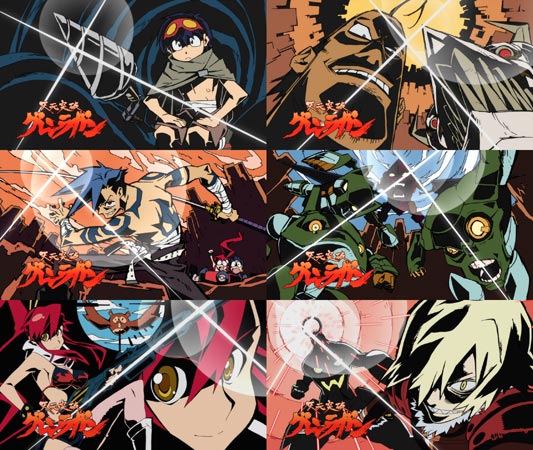
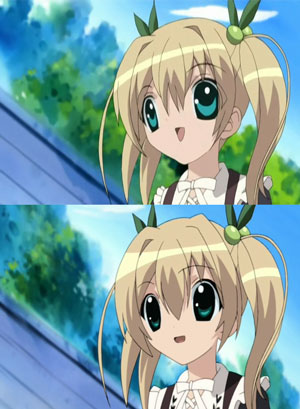
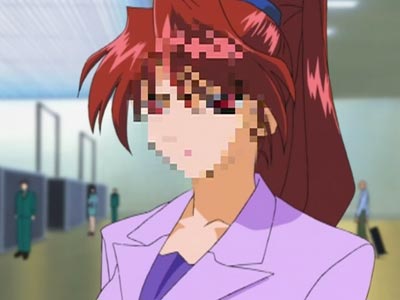
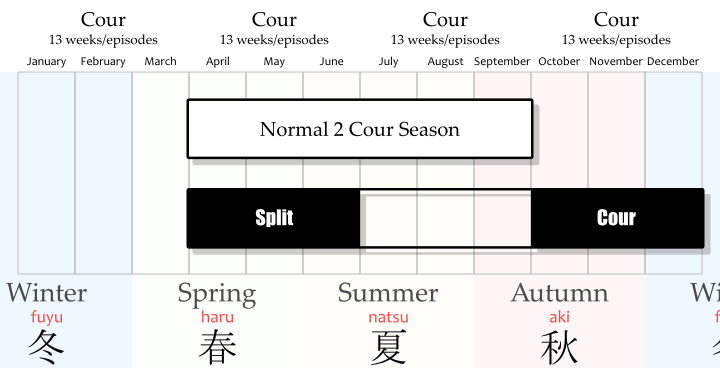
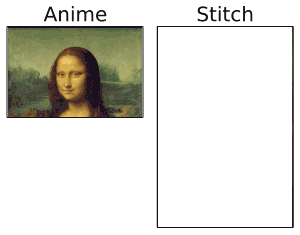
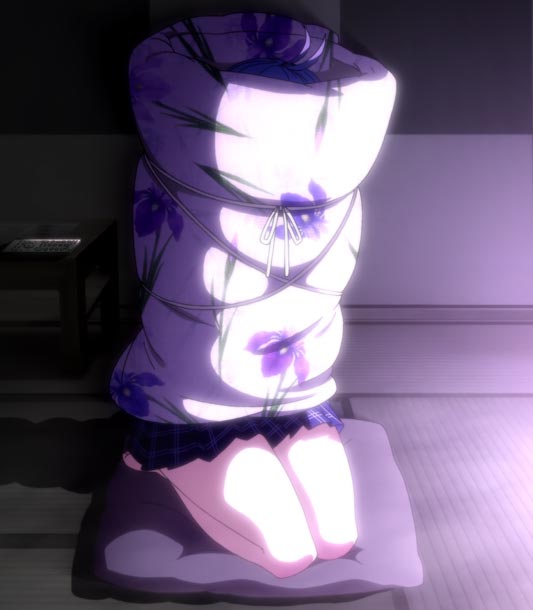
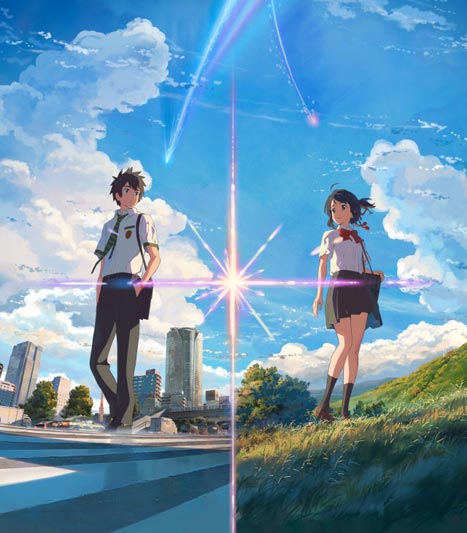
Why... my whole religion is dead... WHY DID I READ THIS!!
ReplyDeleteDon't let mere technicalities sway your faith, sister! Rāmen!
Delete